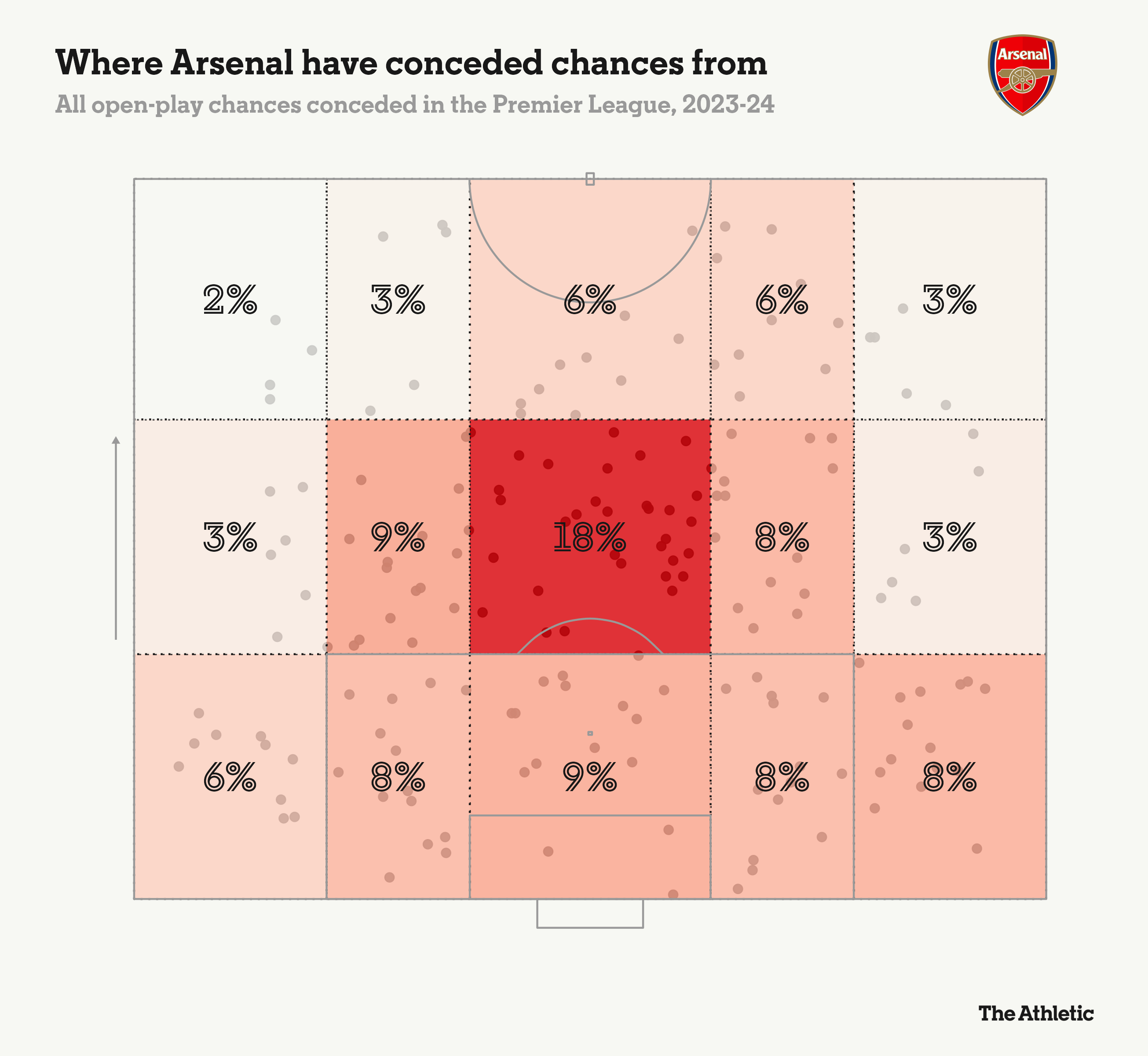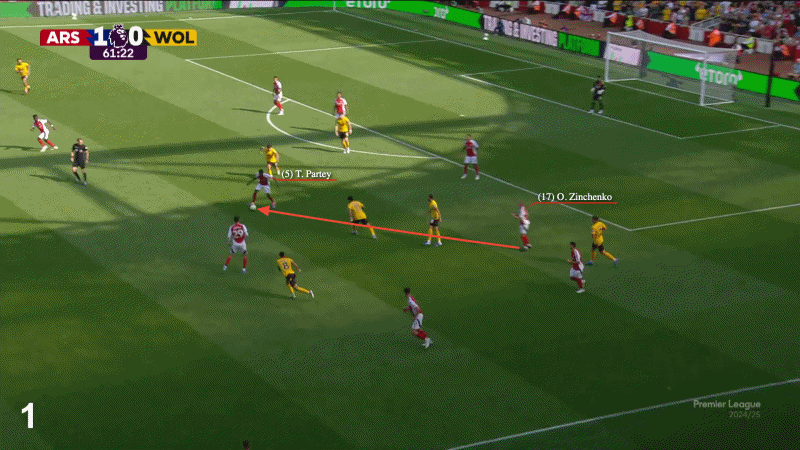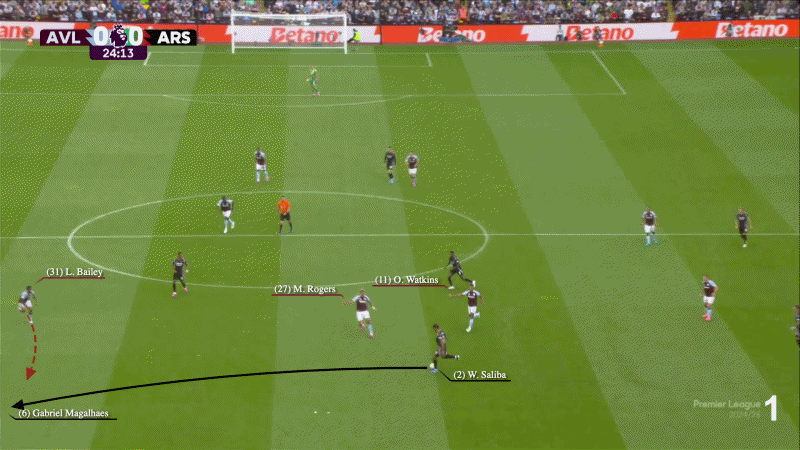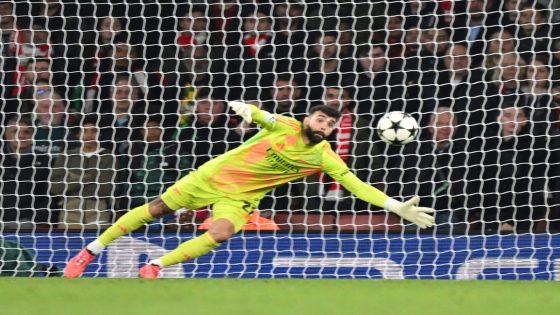Arsenal’s trip to Inter Milan comes at a time of contrast.
They have started this season’s Champions League campaign by keeping three successive clean sheets in the competition for the first time since 2007, a four-game run that lasted from September until November that year. In the Premier League, however, they have failed to keep opponents out in their past six matches. Goalkeeper David Raya has excelled for the most part in both competitions, but that has come out of necessity.
In the league, Raya is facing just over double the number of shots on target per 90 minutes this year (4.3) compared to last (2.2). Faced with more shots, Raya is not only making more saves on average this term (3.2 to last year’s 1.4), but he is also saving a higher share of shots against him (77 per cent to 68 per cent).
Becoming a slightly more efficient and frequent shot-stopper means Raya’s importance to Arsenal has increased. The doubts that clouded his early months at the club are no longer there, but there is only so much the Spaniard can do when facing such a high volume of shots.
Even when Raya kept three clean sheets in the opening four league games of the season, he was forced into making three spectacular saves to keep Arsenal alive. The first came against Wolverhampton Wanderers to keep out a Jorgen Strand Larsen header at 1-0. His reaction save to deny Ollie Watkins after Amadou Onana’s effort rebounded off the Villa Park crossbar was a week later at 0-0, and he made a vital save with his feet against Brighton & Hove Albion’s Yasin Ayari to keep Arsenal level at 1-1.
The first two were nominated for the Premier League save of the month in August, with the cat-like save against Villa the winner.
Take it away, @daviidraya1…⛔️ pic.twitter.com/sYFzk0VGuu
— Premier League (@premierleague) September 13, 2024
Since August, a few trends have left Raya and Arsenal more exposed than last season.
The first, of course, is the three red cards they received in the opening eight games of the campaign. These games will naturally skew any numbers on shots Arsenal have faced. Brighton went on to have 22 shots (four on target), Manchester City 33 (11 on target) and Bournemouth 12 (four on target). The only other matches that rival these numbers are Aston Villa away, when Arsenal faced 11 shots (three on target), and Tottenham Hotspur away (15 shots faced, five on target).
The types of shots Arsenal are facing have changed, too, partially because of their change in approach due to suspensions and Martin Odegaard’s injury.
Against Spurs and in the second half against Manchester City, Arsenal were happy to concede possession. In both games, this forced the opposition to take shots from range, many of which were blocked immediately. These shots often came from the ball being set back to the edge of the box or from crosses, which shows in the share of open-play chances created against Arsenal this season.

Arsenal’s comfort defending in this manner is part of what helped them go 12 away games unbeaten in the Premier League in 2024 before their 2-0 loss to Bournemouth in October.
This season, there is a notable skew of chances conceded to Arsenal’s left-hand side compared to the more even distribution of chances conceded last term. A big part of this will be due to Manchester City setting up shots from their right flank, but nevertheless, after 10 league games that appears to be where Arsenal have been more vulnerable.

Another unhelpful trend this season has been needlessly gifting away possession. This has happened multiple times since August when Arsenal have kept 11 men on the pitch.
On the opening day, it happened twice, with a loose Thomas Partey touch and a blind William Saliba pass leading to shots on goal. Luckily, neither Rayan Ait-Nouri nor Matheus Cunha took advantage.

The next week, Aston Villa pounced on a risky pass to Gabriel and stripped him of the ball. It led to their first shot of the game, which Watkins should have scored. Both Watkins and Morgan Rogers can be seen pointing to Gabriel, indicating Leon Bailey should start his press before Saliba makes his pass.

Bournemouth and Liverpool’s first shots also came from Raya and Mikel Merino turning over the ball, showing the importance of not giving opposition sides an ‘in’ where there wasn’t one.
The fact Arsenal had not kept clean sheets in their three games before the Bournemouth defeat was raised in Arteta’s pre-match press conference that week. On how concerning that was, he said: “Especially with the way we conceded certain goals and the little things we have conceded to concede those goals. There is room for improvement there.
“It’s about being very consistent and making sure that we play with a level of urgency, creation and focus in every action because in the last few games, especially at home, the way we’ve conceded the goals, I’m not too happy about.”
Arteta was referencing the goals conceded against Leicester City and Southampton, which all came from seemingly minor moments in games Arsenal largely dominated. Leicester’s first goal came from a wide free kick after an unintentional Saliba foul. Their second, an excellent volley from James Justin, came from a cross after Jurrien Timber was beaten on the touchline. Against Southampton, a clipped ball in behind Arsenal’s right channel set Cameron Archer away — the defence was set up for an attack, but Raheem Sterling lost possession in midfield.
Almost a month later, Arteta’s point on urgency and focus remains relevant, both in and out of possession. Not every pass or touch will be perfect, especially under pressure, but more sharpness can keep Arsenal in control of games for longer. Defensively, being more engaged in wider channels than in the moments that led to the Leicester, Southampton and Newcastle goals could help prevent goals coming from “little things”, as Arteta put it.
Even though Raya has been marginally less busy in the Champions League this year (1.3 saves per 90) compared to last (1.7 saves per 90), Arsenal have still relied on him. His penalty double save to deny Atalanta’s Mateo Retegui secured their first points of the European season. He then made two important saves from Achraf Hakimi and Joao Neves in the 2-0 win over Paris Saint-Germain, as well as a vital stoppage-time stop with his wrist in the 1-0 win over Shakhtar Donetsk.
After needing the first half of last season to settle, Arsenal have massively benefitted from Raya’s presence in goal this calendar year. His two saves in last season’s penalty shootout win over Porto was arguably the turning point from a shot-stopping perspective and he has been largely reliable since.
Inter Milan will be a test, but it would not be a major shock if Raya excels again in Europe.
Regardless of what happens at the San Siro, the focus will be on how Arsenal can protect him. Raya won last season’s Premier League Golden Glove award and only made 45 saves across the 38 games, earning 16 clean sheets. This term, he has already made 29 saves and kept just three clean sheets in 10 league games.
While the save-of-the-month nominations are eye-catching, the tranquillity that accompanied his Golden Glove would be much preferred. That is not just down to Raya, but the stability in front of him.
(Top photo: Stuart MacFarlane/Arsenal FC via Getty Images)





